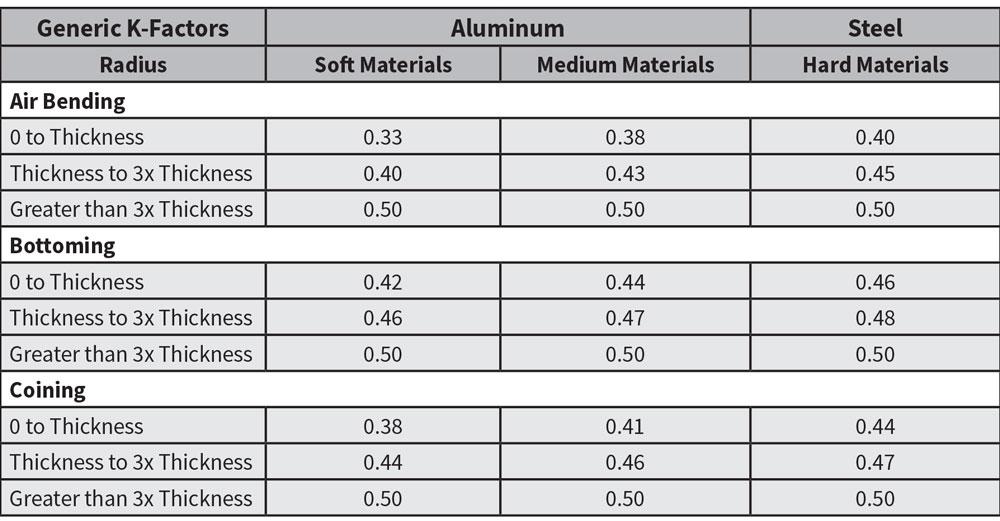Decoding the K-Factor: Precision in Sheet Metal Design
Welcome to the intricate world of sheet metal design, where precision is paramount, and every bend matters. In this blog, we’ll unravel the mystery behind a key player in sheet metal formulation: the K-Factor. Let’s explore what the K-Factor is, its significance in sheet metal bending, and how it dances in harmony with different materials.
Understanding the K-Factor
The K-Factor, short for “neutral axis factor” or “bend allowance factor,” is a critical parameter in sheet metal bending. It’s a dimensionless value that represents the ratio of the neutral axis location to the material thickness. In simpler terms, the K-Factor helps account for the material’s behavior during bending, ensuring accurate calculations for the flat pattern.
The K-Factor Formula: A Glimpse into the Math
The formula for calculating the K-Factor is:
![]()
This distance is typically measured from the center of the material thickness to the neutral axis, where no stretching or compressing occurs during bending.
Significance of K-Factor in Sheet Metal Bending
- Accurate Bend Allowance:
- The K-Factor plays a pivotal role in determining the bend allowance, which, in turn, influences the flat pattern’s accuracy. It helps adjust for the material’s stretching or compressing during the bending process.
- Material Behavior Consideration:
- Different materials exhibit varying behaviors during bending. The K-Factor provides a way to tailor the bending calculations to the specific characteristics of the material being used.
- Precision in Design:
- Achieving precision in sheet metal design is not just about angles and dimensions; it’s about understanding how the material responds to bending forces. The K-Factor ensures that your design aligns with the real-world behavior of the material.
K-Factor and Material Relationship: A Symbiotic Dance
The K-Factor is intricately linked to the material properties of the sheet metal being used. Different materials have distinct behaviors during bending, and the K-Factor allows designers to account for these variations.

Here’s how the relationship unfolds:
- Material Ductility:
- Ductility, the ability of a material to undergo deformation without rupture or cracking, influences how the material stretches during bending. Materials with higher ductility might have different K-Factors compared to less ductile ones.
- Material Thickness:
- The thickness of the sheet metal also affects the bending process. Thicker materials may have different K-Factors compared to thinner ones, as the forces exerted during bending vary with thickness.
- Bend Radius:
- The radius of the bend significantly impacts the K-Factor. Different bend radii can result in variations in the stretching or compressing of the material, influencing the appropriate K-Factor to use.
Conclusion: Mastering the Material Symphony
In the realm of sheet metal design, the K-Factor is your guide to mastering the material symphony. It ensures that your designs are not just lines on paper but accurate representations of how the material will behave in the real world. As you delve into the world of sheet metal bending, remember that the K-Factor is your ally, helping you achieve precision, accuracy, and a harmonious dance between design and material reality. Happy bending!





